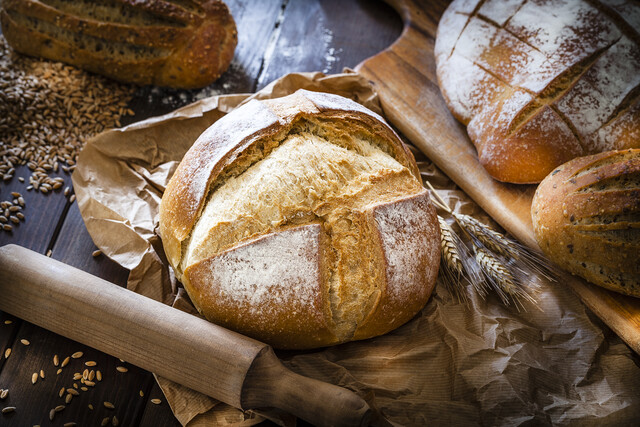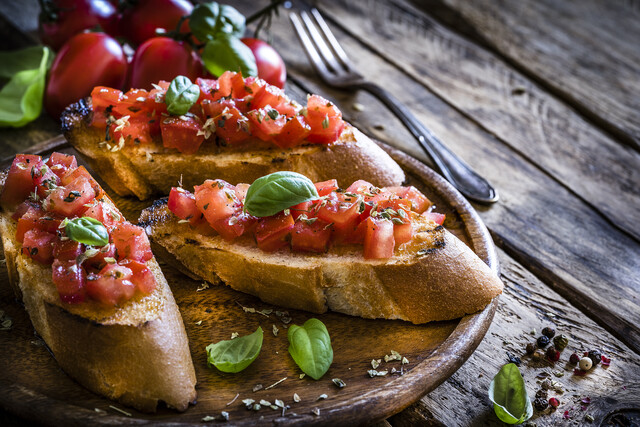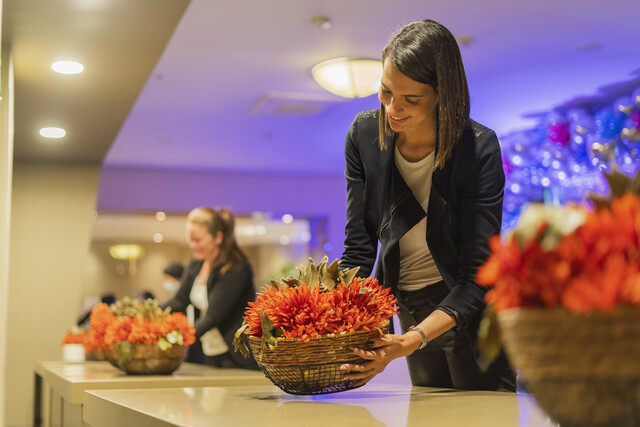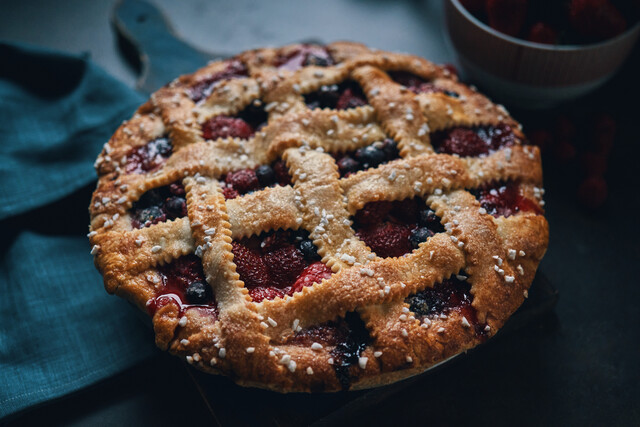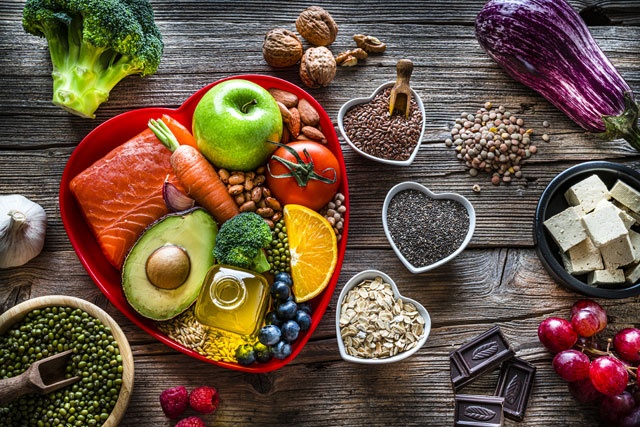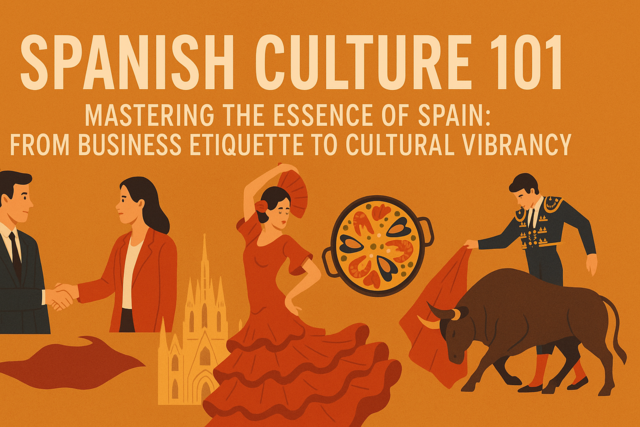Chocolate has been beloved for at least three thousand years; its first documented use was in 1100 BCE by the Aztecs who brewed the cocoa seeds into xocolatl or "bitter water." Chocolate was used in Mesoamerica for centuries in beverages and cuisine before the arrival of the Spaniards. Following the conquest of the Americas, chocolate was brought to Europe where it was mixed with fats and sugar to create, possibly, the most beloved dessert worldwide. Chocolate is not only popular in the ubiquitous chocolate chip cookies and brownies, but it is also made into rich winter drinks, mixed with coffees, made into cakes, and melted into shapes to give as gifts.
Cocoa alone has a very bitter taste and must be fermented to ripen its flavor before use. After fermentation the beans are dried and roasted, their shells removed, and ground into cocoa mass. At this point the cocoa mass is almost always melted and molded into other cocoa products, cocoa solids and cocoa butter, so it is known as chocolate liquor at this stage. Chocolate products contain varying quantities of cocoa solids and cocoa butter.
Objectives:
1. Learn about the different types of chocolate used for cookie baking.
2. Learn how to melt, chop, and work with chocolate.
Cocoa Powder:
Cocoa Powder is made up entirely of cocoa solids and is sold as an end product. It contains none of the cocoa butter, and hence none of the fat that gives rise to chocolate's unique melting abilities. Cocoa powder is great for cookie making because, like unsweetened baking chocolate, it gives the baker more freedom to shape the sweetness and flavor of the cookie. Cocoa powder is often used in chewy, brownie-like chocolate cookies and pairs nicely with pecans and hazelnuts.
Unsweetened Baking Chocolate:
Unsweetened baking chocolate is almost entirely cocoa solids and cocoa butter. It is also known as bitter chocolate, because it has no added sugars and retains its natural strong flavor. The only additional ingredients in baking chocolate are fats to create a solid mass. Baking chocolate is used for baking, and is the favorite of many bakers due to the fact that a baker has full freedom over the sweetness and flavor of this type of chocolate when mixed with sugars or spices. This can be a great choice for glazes and icings as long as you keep in mind that you may need to add a sweetener to counterbalance the inherent bitterness of the chocolate.
Dark Chocolate:
Dark chocolate, which has a high cacao percentage, retains more of its original taste than its sweeter cousin, milk chocolate. Dark chocolate is not entirely unsweetened, like baking chocolate, but it can be up to 99% cacao which is pretty close. Dark chocolate, or black chocolate, comes in varying depth ranging anywhere from 35-99% cacao. There is no official percentage standard of the amount of cacao in dark chocolate in the United States, but Europe holds strictly to the 35% rule. Many people opt for dark chocolate due to its rich, but not overwhelming, flavor and its subtly sweet undertones. It is a favorite with health conscious bakers (70% cacao and above) because it is high in antioxidants and low in processed sugars. Semisweet chocolate chips are considered dark chocolate; however, they tend to be on the low end of the spectrum percentage wise.
Couverture Chocolate:
This is a type of dark chocolate that contains high (32-39%) amounts of cocoa butter. It tends to be quite expensive but a favorite with pastry chefs and sold in specialty stores. It has a crisper "snap" when broken into pieces and a mellow, smooth taste and texture. This is the best chocolate for melting into glazes.
Milk Chocolate:
Milk chocolate is the most popular chocolate consumed in the United States, and it is probably what most Americans think of when they think of chocolate. It is the creamy, sweet, lighter brown version that coats most candy bars and chocolate treats. Milk chocolate, in addition to added sugar, also contains powdered milk, liquid milk, or condensed milk which gives it a creamy taste and light mouth feel.
White Chocolate:
Unsweetened baking chocolate, dark chocolate, and milk chocolate all have one thing in common: they contain both cocoa solids and cocoa butter. White chocolate is an altogether different concoction. It has the least amount of antioxidants or natural bitter taste of chocolate because it contains only cocoa butter mixed with sugar and milk.
Flavored Chocolate:
Flavored chocolate is generally milk chocolate with added flavorings; however, it can also be dark chocolate as well. Common flavors are toffee, caramel, orange, mint, and chili. Using these flavored varieties as chunks in cookie baking is up to the discretion of the baker, but you must always keep in mind that flavored varieties tend to be sweeter, and sometimes their strong flavors overwhelm the overall taste of the cookie.
Working with Chocolate:
There are many ways to incorporate chocolate into the cookie baking process: glazes and frostings, chips and chunks, and even in the body of the cookie itself. Chunks and chips are folded into the batter after everything else is incorporated and cocoa powder is usually added to the dry ingredients. Melting chocolate in particular requires patience and practice.
Melting Chocolate:
There a few quick and easy ways to melt chocolate, but the two most common and tested are the microwave method and the double broiler method. The microwave method is best for smaller quantities of chocolate (less than one pound), and the double broiler method can handle small to large quantities easily.
-
The Microwave Method
This should only be done with chocolate chopped into small pieces or chocolate chips. Place in a microwave safe bowl and microwave in short increments (30-45 seconds) and stir in between. Eventually, some pieces will be melted and the rest might maintain their shapes but they will be shiny and glossy. At this point you will be able to stir the mixture until the heat is distributed and the chocolate is evenly melted. Stirring is a very important part of this task. If the chocolate is overheated it will burn and result in unusable chocolate.
-
The Double Broiler Method
This method is the most versatile way of melting chocolate and allows the baker to have the most control over the melting process. Chocolate can be cut into either large or small pieces and used in large or small quantities. You can either buy a double broiler or make one from a glass bowl and a pot. Place 1 � - 2 inches of water in the pot on the stove. Place the glass bowl on top of the pot and make sure the water does not touch the glass bowl. The best bowls to use have lips to protect them from any steam or water finding its way into the melting chocolate. Remove the glass bowl and bring the water to a boil. After it has reached a boil, turn the water down to a bare simmer. Replace the glass bowl and stir the melting chocolate with a rubber spatula the entire time to ensure even melting.
Chocolate Chips vs. Chocolate Chunks:
This is mostly an issue of personal preference, but here is a rundown of the differences between the two. Chocolate chips are small and uniform in size. This can be good when opting for a darker variety, as some people do not like the bitter flavor that sometimes accompanies dark chocolate. Chocolate chunks are a good choice in a milk chocolate variety. Their varying sizes add character and elegance to an ordinary cookie. They also open up the options of chocolate choice to any chocolate bar you like.
-
Making Chocolate Chunks
Chocolate chunks are not bought at the grocery store as-is. They are, simply put, chopped chocolate bars. The great thing about opting for chocolate chunks is that you can use any chocolate bar you like. If your favorite bar has bits of toffee in it, you can use it to spice up your cookie. Try to use the same amount (by weight) as the recipe calls for in chocolate chips. Cut the bar with a sharp knife on a cutting board. Do this when the chocolate is at room temperate. If you attempt to chop a bar that is too cold, it can not only be difficult, but your knife could actually slip and cause an accident. Chocolate that is chopped too warm will turn into a slimy mess of melted chocolate.
Conclusion:
Chocolate has been beloved for centuries maybe it is due to the fact that it contains alkaloids such as theobromine, phenethylamine and caffeine which are known to influence the brain and aid in the release of serotonin. Maybe it is because it has an almost perfect mixture of sugars, fats, and bitterness, or maybe it is because of the unique smell and the characteristic texture. Whatever it is, there is no denying that people love their chocolate.
Working with Nuts
Some of the most popular cookie additions are nuts. They add smooth flavor and welcome crunch. The go-to cookie combinations involving nuts are chocolate chip and pecan, chocolate and walnut, and white chocolate and macadamia nut. These are all great combinations, but nuts go with a lot more things other than chocolate. A good nut is a good addition to any cookie, just be sure that the people you are baking for do not have any nut allergies.
Objectives:
1. Learn how to select the best nuts for your cookies.
2. Learn how to properly and easily shell different kinds of nuts.
3. Learn how to roast and toast nuts for cookies.
Selecting your Nuts:
The best nuts are fresh nuts. When they go bad, rancid, they have a horrible flavor and will ruin any batch of cookies. Always taste your nuts before using them. If possible buy them in the bulk section of your grocery store and ask for a sample before buying to ensure that you get the best quality nuts for your money. Organic and local nuts are more likely to be fresher and pack a stronger flavor. Normally, you will want to buy raw nuts for your cookies. You can roast them yourself at home. The pre-salted varieties are generally not the top pick for cookies; however, a good salted almond goes great with caramel or chocolate.
Shelling and Peeling:
The only downside to using nuts in your cookies is that they can be difficult to work with, but if you know a few little tricks they can get a lot simpler.
Pecans:
Shelling Pecans with a traditional nutcracker and little practice can leave people frustrated in front of a bowl full of pecan fragments with pieces of hull still attached. There are two simpler ways to shell pecans quickly and efficiently. Shelling your own pecans may take practice but the reward will be less expensive, fresher nuts.
-
The Side Cutter and Plier Method
This is the fastest, most efficient way to shell pecans, but it requires tools more often found in a workshop than in a kitchen. For this method you will need a sharp pair of side cutters, a plier, and a small flathead screwdriver. All of these items can be found at your local hardware store.
1. Snip off both ends of the pecan with the side cutters.
2. Crack around the widest part of the pecan a few times while rotating it in a circular motion.
3. Remove the hulls.
4. Scrape any remaining fragments out with a small flathead screwdriver (any small, thin metal instrument should work).
-
The Boiling Method
This method will make the pecans softer and easier to shell, but you will still need to use a nutcracker, or the above method, to complete the shell removal.
1. Fill a large pot � full with water and bring to a boil.
2. Drop unshelled pecans into the boiling water and allow water with pecans to boil for 15 - 20 minutes.
3. Remove pecans from the boiling water and allow to cool.
4. Crack and shell the pecans as soon as they are cool enough to handle.
5. Allow shelled pecans to dry (on paper towels) for 24 hours before using.
Hazelnuts:
Hazelnuts are not among the most common nuts used in cookie baking, but they are an unexpected treat for any audience. The brown peels of hazelnuts are bitter; therefore, in order to use hazelnuts in your cookies, you should always be sure the remove the skins. The skin of the hazelnut doesn't just peel off like that of an orange. Here are two surefire was to get rid of the tricky skin and prepare the hazelnut for roasting or baking.
-
The Oven Method
1. Preheat your oven to 350�.
2. Spread hazelnuts in one layer on a cookie sheet and allow to cook for 10 - 15 minutes until the skins are brown and blistered.
3. Remove from oven and wrap in a dish towel.
4. Allow to steam for 1 minute.
5. Use the towel to rub the blistered skins off the hazelnuts.
-
The Boiling Method
1. Bring 1 � cups of water to a boil.
2. Add 2 tablespoons of baking soda and 1 cup of hazelnuts.
3. Allow to boil for 3 minutes.
4. The water will turn black from the skins � this is completely normal.
5. Rinse nuts well under cold running water and peel the skins off with your fingers. They should slip right off but you may want to rub them with a towel to be sure.
6. Allow to dry out completely before using.
Almonds:
Some recipes call for blanched almonds, or almonds with their skins removed. Even though the almond skin is not bitter like the hazelnut skin, some people prefer the look and taste of blanched almonds. The best way to peel almonds is with a pot of boiling water.
-
The Boiling Water Method
1. Place shelled almonds in a bowl.
2. Pour boiling water into the bowl, just enough to cover the almonds.
3. Allow almonds and water to sit for 1 minute.
4. Drain the water.
5. Rinse with cold water and drain again.
6. Pat-dry the almonds with a dish towel and slip the skins off.
Note: If you leave the almonds in the water for too long, they will lose their crunch.
Macadamia Nuts:
Macadamia nuts are generally sold shelled and peeled, but if you happen to find yourself with a raw macadamia nut there are a few ways to crack the stubborn shell. The macadamia nut shell is extremely strong, so unless you have a vice grip to hold the nut in place, you may want to use a rock with a small hole.
-
The Macadamia Nutcracker Method
1. Inspect the macadamia nut to locate the white spot on the opposite end from the stem spot.
2. Place the nut in the nut cracker with the white spot under the metal and the stem spot at the base.
3. Cover the open side of the nutcracker with your hand and turn the screw of the macadamia nut cracker.
4. One or two turns should suffice.
5. If the nut does not crack at first, reposition it and try again.
-
The Rock Method
1. Locate a rock with small shallow holes (volcanic rock, limestone, etc.) and place the macadamia nut in the hole. Be sure that some of the nut is still above the surface of the rock.
2. Once the nut is secure, find a strong flat rock and pound the nut until it cracks.
Roasting and Toasting Nuts:
Roasting, or toasting, nuts is a great way to enhance the flavor and crispiness of the nut. It adds depth and dimension to the overall cookie experience. A raw nut in a cookie can be a good addition, but a roasted nut is (almost) always a better one. There are two basic ways to roast or toast nuts: in the oven or on the stove. For savory dishes, many chefs add a splash of oil to coat the nuts while roasting but this is not desirable for cookie baking as the oil can disrupt the flavors of the rest of the recipe.
-
The Oven Method
1. Preheat your oven to 350�.
2. Spread nuts in one even layer on a cookie sheet and place in the oven.
3. Check nuts after 5 minutes and stir.
4. Check again after 3 - 5 more minutes and stir if not yet done
5. When the nuts are done roasting, they should be a few shades darker but not dark or burnt.
6. Most nuts take between 8 and 12 minutes to roast.
-
The Stove Method
1. Turn your stove on a medium-high heat and place a frying pan over the burner.
2. Add the nuts to the pan.
3. Stir frequently to prevent over browning.
Cookies with Nuts:
Any roasted nut is a great addition to most cookie recipes. They add depth and flavor while enhancing the complexity of the cookie. They also add to the appearance of the cookie.



